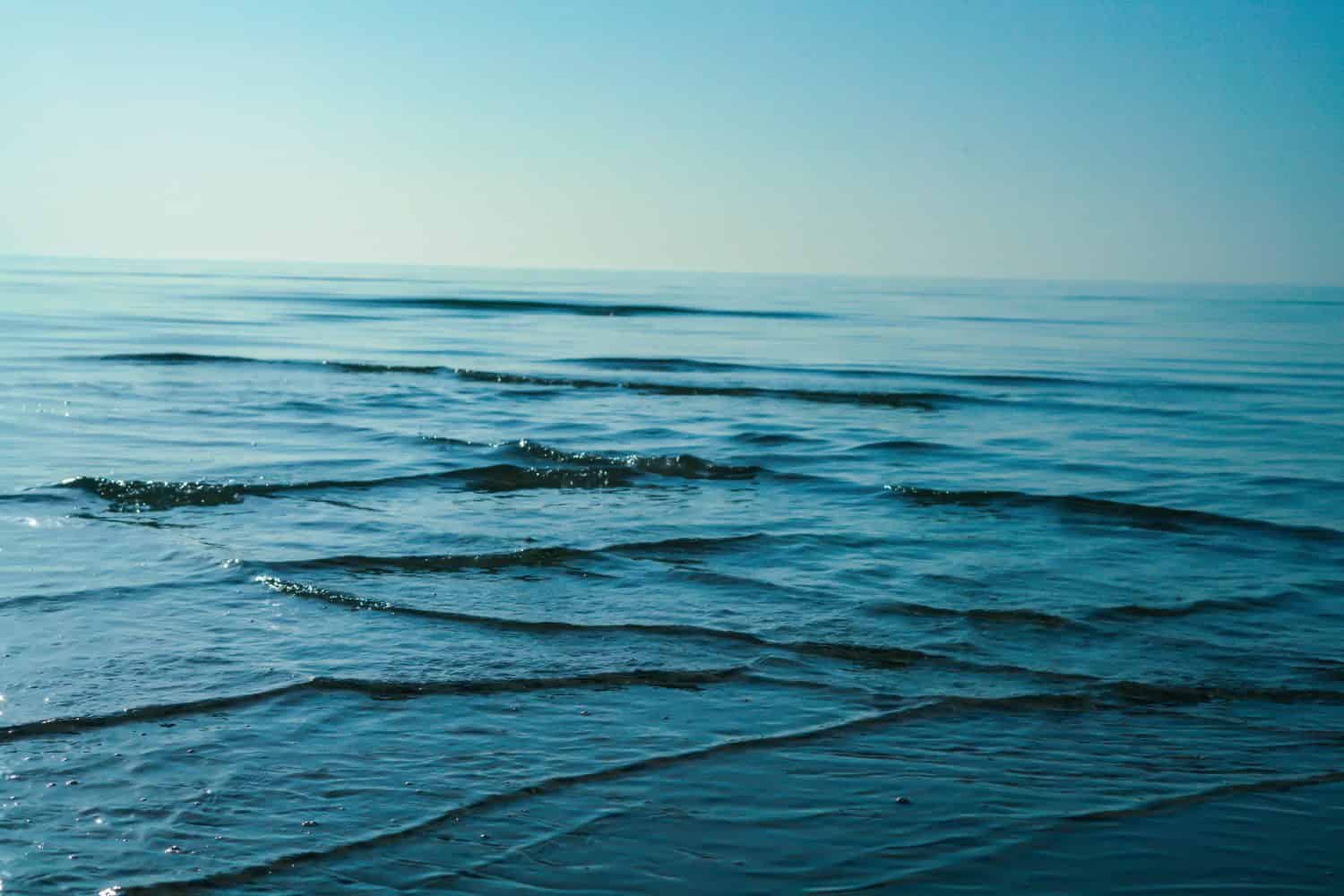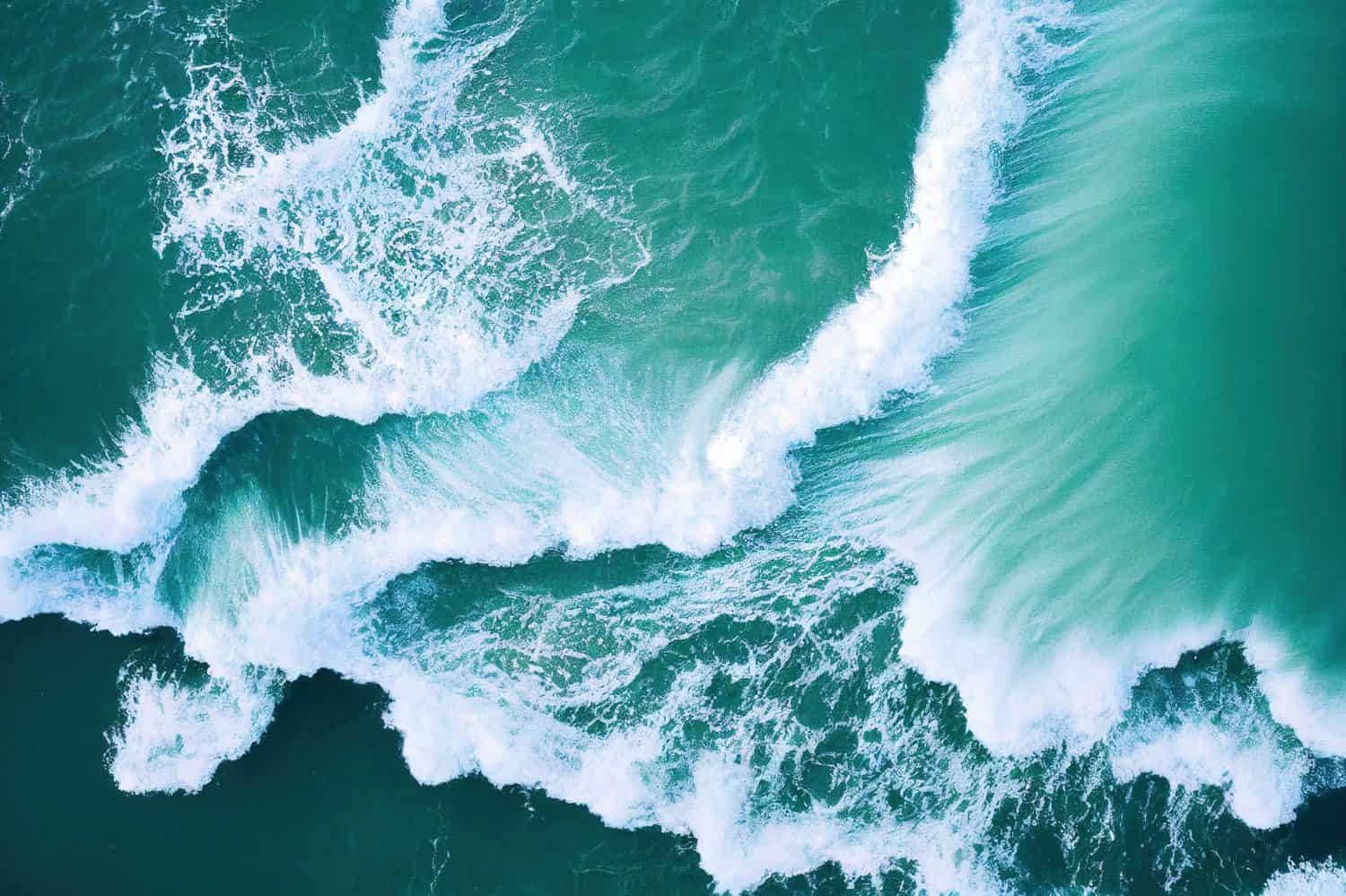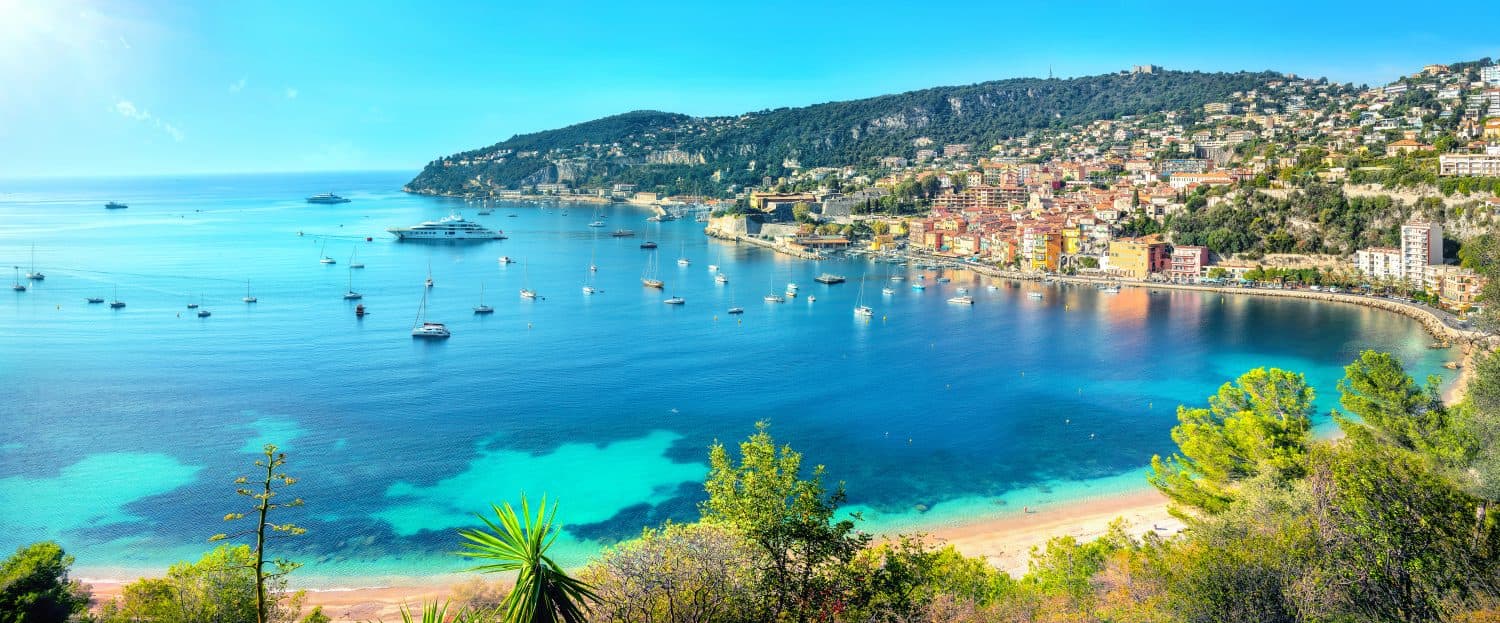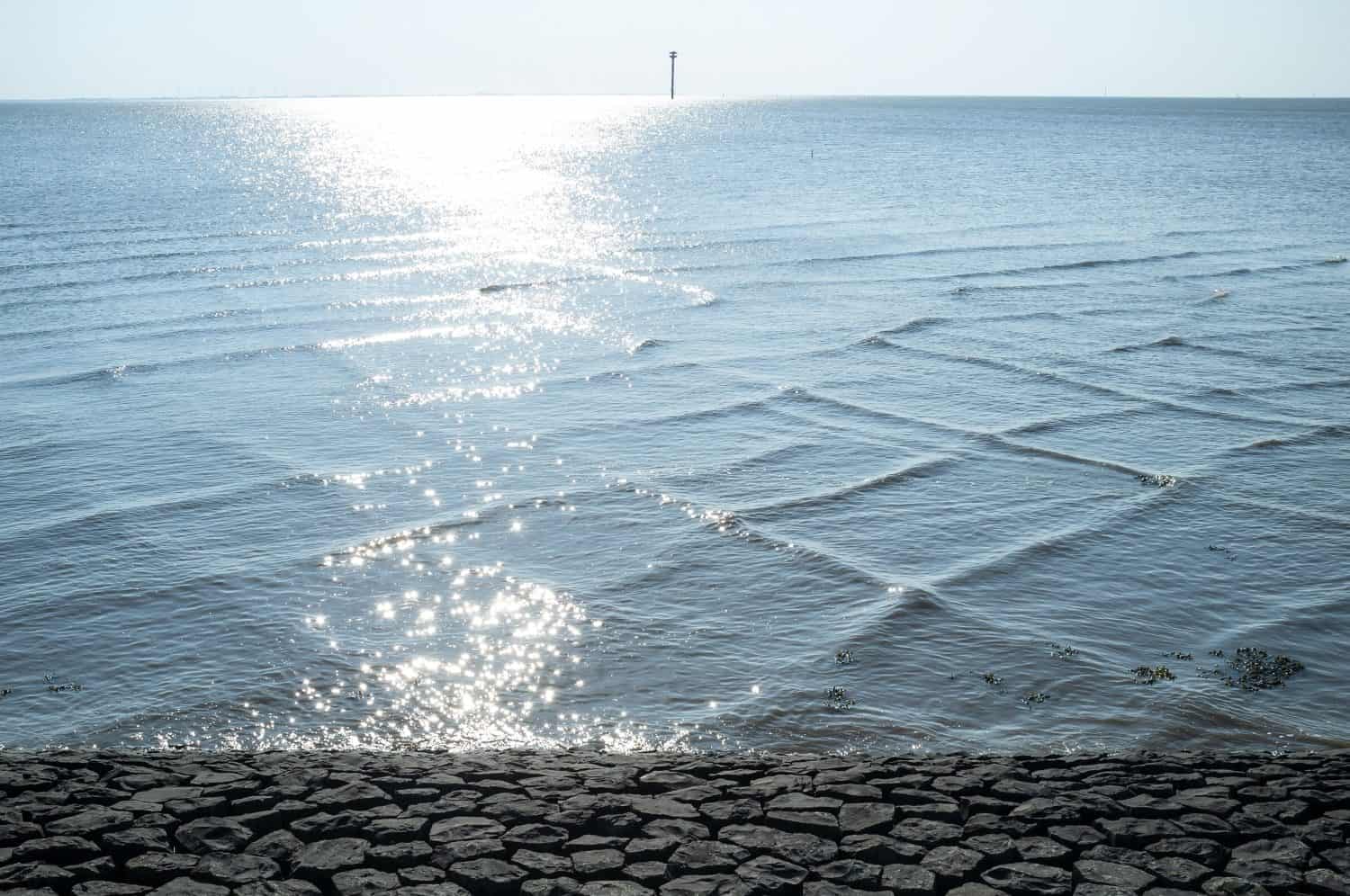Our planet is home to many awe-inspiring wonders and unique phenomena. The surface of the Earth is 71% covered in water. Shockingly, the ocean accounts for about 96.5% of all of the planet’s water. The ocean, with its vast expanse of blue and green waters, has long captivated human attention for centuries. People are drawn to its stunning coastline, sandy beaches, and unmatched tranquility. Yet, just beneath the water’s surface lies a treasure trove of mystery. Among these interesting phenomena are the rarely-seen square ocean waves. This captivating and treacherous spectacle defies the conventional order of waves and can affect boats, watercraft, and swimmers alike. Dive deep into the depths of this phenomenon, unraveling what causes square waves in the ocean. Read on to explore their fascinating — and dangerous — nature.
What are Square Waves?

Square waves are a rare but mesmerizing natural wonder.
©LetsGetPhil/Shutterstock.com
To begin, square waves are exactly what they sound like, a type of ocean wave that takes on a square shape. They are also known as cross seas or grid waves because of their geometric, crisscrossed pattern.
What Causes Them?

Square waves occur most frequently in open waters, where two different oceans or seas converge.
©Beautrium/Shutterstock.com
Challenging the very foundation of wave dynamics, square waves are unlike anything else observed in the ocean. They are a rare phenomenon that occurs because of wave refraction or wave diffraction. This describes the interaction of waves with coastal features and obstructions such as cliffs, headlands, or breakwaters. The result is two ocean swells that hit each other at perpendicular angles. Alternatively, the waves can bend in two different directions, all of which cause square waves.
It can also happen when waves from different weather systems crash against one another at a 90-degree angle. Another possible cause of square waves is two strong currents going in opposite directions colliding together in the water. Certain weather patterns in the region are another possible cause of these strange checker-like ocean waves. Either way, any of these three situations can create those unique, sharp corner angles in the waves. They also cause abrupt changes in the water’s direction.
Where Do Square Waves Occur?

France attracts many tourists due to the prevalence of square waves off its coasts.
©Valery Bareta/Shutterstock.com
Predominately occurring in coastal areas, square waves form around peninsulas of land where two different seas or oceans meet. Square waves can appear and disappear in as little as 5 minutes, but some last much longer than that. This phenomenon is even considered a common occurrence in some parts of the world.
The Isle of Ré in France is considered the most famous place in the world to spot square waves. The local waters serve as the perfect environment for the formation of this wave type. This is mainly because it is where the cold waters of the Atlantic Ocean and the warm waters of the Gulf Stream connect. Isle of Re is located just off the coast of La Rochelle, which attracts thousands of tourists each year. With people flocking to this coastal land in hopes of seeing square waves, only some are lucky enough to spot them. This is due to the unpredictability of square waves, which only occur during certain times of the year. New Zealand and Tel Aviv are two other places where square waves can be found. This is mainly due to the various currents in the Tasman and Mediterranean Seas.
Possible Dangers of This Wave Type

Above the surface, square waves can sometimes appear gentle. However, beneath the surface are currents strong enough to destroy ships.
©New Africa/Shutterstock.com
By this point, you might be wondering if square waves are actually all that dangerous. The short answer is yes, of course they are! With their peculiar shape and unusual behavior, square waves pose a unique set of dangers to both swimmers and marine vessels. Square waves can be very dangerous for several reasons. Since square waves are the direct result of two swells or ocean currents combining together, they create extremely powerful rip currents and undertows. As a result, even the strongest swimmers may not escape from their grasp.
In addition, the sudden changes in wave direction can disorient and exhaust swimmers trying to escape square waves. It also makes it challenging to stay afloat or navigate back to their boats — or land. When venturing into areas where square waves are more common, swimmers must pay close attention to their surroundings. This ensures swimmers’ utmost safety because it reduces the risk of being caught up in these treacherous waves.
Lastly, this ocean phenomenon creates incredibly unpredictable after-shock waves. Whether you are swimming in the water or riding in a boat, these waves are very dangerous. Because the human body is no match against the great forces of the ocean, a swimmer could easily get pulled below the surface or drowned. The most dangerous part of the wave is in the corners where the crests connect because that is where the humps — or waves — are most powerful.
Boats Are No Match Against Square Waves
Furthermore, the irregular wave shape and sudden direction shifts make it difficult for boats and other vessels to maintain stability. Since boats are not built for this rare wave type, square waves cause boats to rock violently and unpredictably. This increases the risk of damage, taking on water, or worse, capsizing. Since these waves are quite powerful, the enormous amount of force they exert can potentially cause structural damage to the hull or even complete failure. While square waves are not a common occurrence, it is still important for boat operators to remain aware of their surroundings and know what to do in case they encounter this wave type. All in all, square waves can be life-threatening. If spotted in the waters nearby, they should always be taken seriously.
How to Avoid Square Waves

The easiest way to avoid square waves is by not venturing far out from shore.
©DZiegler/Shutterstock.com
Avoiding square waves requires situational awareness as well as preparedness and education. At the very least, if you find yourself in the ocean and start to see square waves around you, immediately get out of the water and/or move your boat to a different area that is far from these waves. There are also many things you can do before getting in the water to remain safe and avoid the dangers of square waves. Above all else, staying informed is key.
Before heading out into the ocean, make sure to check weather reports and marine forecasts to stay on top of advisories or warnings relevant to the area you plan to go to. When possible, try to plan your route in advance to avoid areas known for the occurrence of square waves. By staying on top of any potential hazards in the area, you can make informed decisions and adjust your plans to ensure the utmost levels of safety for you and anyone else you are planning on going with.
Encountering Square Waves While Boating
If you encounter square waves on a boat, the most important factor to focus on is maintaining the stability of the vessel. While the force of these waves will cause a rocky ride regardless of what you do, it is essential to reduce your speed and ensure proper weight distribution across your vessel. This helps increase stability. Securing loose objects can also further prevent damage, injury, or capsizing. It is always best to seek refuge in an area with calmer waters, so when it is safe to do so, try to move to a safer area and wait it out there until the water conditions improve.
Encountering Square Waves While Swimming
With that being said, square waves do not typically occur near or close to the shore of beaches or coastlines. Instead, they are only found far offshore in the open ocean. Because of this, square waves mainly pose a significant danger to boats and ships that are further out in the ocean. As a swimmer, you can avoid square waves by swimming with caution and heeding lifeguard warnings and local advisories. When planning a beach day, do not venture too far from the shore.
If you do get stuck in a body of water that is experiencing the square wave phenomenon, swim parallel to the shore (if it is visible) until you escape the rip current or affected waters. Overall, it is essential to always be careful, cautious, and highly observant at all times when in the ocean, especially if you find yourself in open waters.
Bottom Line

Appreciate the ocean, but be cautious and mindful of your surroundings at all times.
©Peera_stockfoto/Shutterstock.com
This article ventured deep into one of the world’s greatest mysteries: square waves. We analyzed the phenomenon, what causes square waves in the ocean, where to find them, and why they pose a danger. The ocean is one of the planet’s greatest irreplaceable treasures, and we must respect it. Ocean visitors must never forget its inherent power and the potential dangers that lie just under the water’s surface. The mystery of square ocean waves, with their striking appearance, reminds us of the unpredictable nature of the ocean. By understanding the causes, characteristics, and dangers of these square waves, people can better prepare themselves and stay safe in emergency situations. So when you explore the ocean, keep in mind that it comes with just as many risks as it does wonders.
Thank you for reading! Have some feedback for us? Contact the AZ Animals editorial team.








